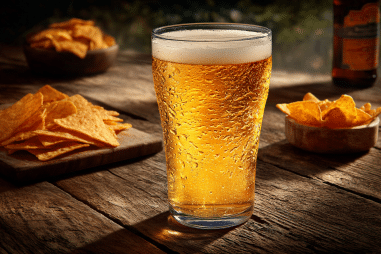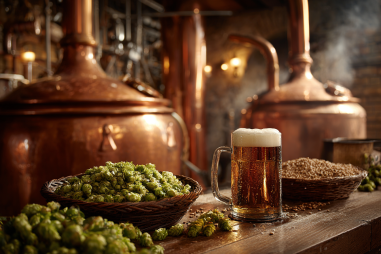Irish Extra Stout is more than just a dark, robust beer—it’s a brew steeped in centuries of tradition, culture, and craftsmanship. Known for its rich flavors and distinct character, this iconic beer has a story that stretches back to 18th century Ireland. By diving into its history and origins, we gain a deeper appreciation for its significance not only in Irish society but also across the world. Let’s take a journey through time and explore how Irish Extra Stout evolved from humble beginnings into a global symbol of quality stout brewing.
Early Origins of Stout Beers in Ireland
The story of stout beers in Ireland begins in the early 1700s, a time when brewing was developing as a craft distinct from ale making. Originally, the term “stout” referred to the strength of a beer rather than its style or color. Stouts were simply strong ales, often referred to as “stout ales,” distinguishable by their higher alcohol content and richer body.
By the mid-18th century, brewers in Ireland began to specialize, experimenting with roasted barley to add depth and dark color to their beers. This technique became a signature of Irish craftsmanship. The robust roasted flavor, combined with a robust malt backbone, laid the foundation for what would soon be recognized as the Irish stout style. Often enjoyed by workers and farmers, these beers were prized for their heartiness and warming qualities during Ireland’s damp, cool climate.
The Emergence of Irish Extra Stout as a Distinct Style
While stouts existed in several forms during the 18th century, the “extra stout” label started to appear primarily in the 19th century. Irish Extra Stout is characterized by a more pronounced roasted barley taste, a dry finish, and a medium to full body with moderate carbonation. The “extra” implied a stronger, richer brew that stood apart from standard stouts and porters of the day.
This emerging style reflected consumer preferences for a beer that was not only flavorful but also well-balanced and satisfying. The use of roasted unmalted barley became more central, giving Irish Extra Stouts their trademark dark color and slightly burnt, chocolatey notes. This was a key development that separated Irish salmon-dark stouts from their English counterparts, which often used more malted barley and were less focused on the roasting process.
Prominent Breweries and Their Historical Impact
The rise of Irish Extra Stout is inseparably linked with some of Ireland’s most legendary breweries, many of which have left an indelible mark on beer culture worldwide.
- Arthur Guinness & Co.: Founded in 1759 in Dublin, Guinness is undeniably the most famous name associated with Irish Extra Stout. Arthur Guinness’s brewery brought the stout style into the mainstream with its iconic rich and complex stout known for roasted barley flavors and creamy texture. Guinness Extra Stout became synonymous with quality and tradition.
- Smithwick’s Brewery: Although better known for its red ale, Smithwick’s also experimented with darker brews, influencing stout recipes across the country.
- Murphy’s Brewery: Based in Cork, Murphy’s crafted their own version of Irish Stout which proudly competed with Guinness and helped popularize the stout style in southern Ireland.
These breweries, alongside smaller regional brewers, paved the way for the Irish Extra Stout’s acclaim. Their dedication to quality, innovation, and tradition helped codify brewing techniques and flavor profiles that remain standards today.
Evolution Through the Centuries
Since its inception, Irish Extra Stout has seen an evolution reflecting changes in brewing technology, consumer taste, and global markets. During the 19th century, industrialization allowed for more consistent brewing processes, enhancing the quality and availability of stout beers. The introduction of pasteurization and refrigeration helped Irish Extra Stout reach new markets far beyond Ireland’s borders.
In the 20th century, the stout style faced competition from lagers and lighter ales, particularly as consumer preferences shifted. Yet Irish Extra Stout persisted due to its deep cultural roots and unique flavor. Breweries continued refining brewing techniques to maintain authenticity while balancing modern drinkability.
Today, many craft breweries draw inspiration from traditional Irish Extra Stout recipes, while introducing new twists such as barrel aging, adjunct ingredients, and experimental yeasts. The beer’s evolution highlights its adaptive nature without sacrificing the core characteristics that define it.
Irish Extra Stout’s Role in Irish Society and Culture
Irish Extra Stout has long been more than just a beverage in Ireland; it’s a cultural icon entwined with social rituals and national identity. Traditionally, stout was consumed in pubs, which acted as communal hubs where stories were exchanged and bonds forged. The beer’s hearty flavor complemented Irish cuisine and weather, making it a comforting presence in daily life.
Its popularity crossed class boundaries, enjoyed by laborers and aristocrats alike. Stouts also played a role in celebrations, gatherings, and even political discourse. The stout became symbolic of Irish resilience, craftsmanship, and conviviality—an embodiment of the spirit of the people.
Culturally, Irish Extra Stout is often celebrated during festivals like St. Patrick’s Day, reinforcing its connection to Irish heritage worldwide. The beer’s role in storytelling and socialization has solidified its place as a touchstone of Irish identity.
The Beer’s Spread Worldwide
Irish emigrants played a crucial role in sharing Irish Extra Stout beyond Ireland’s shores. From the 19th century onward, Irish communities around the world helped popularize the stout style, introducing it to new audiences in the United States, Canada, the UK, Australia, and beyond.
Breweries like Guinness established export operations and brewing partnerships globally, making Irish Extra Stout a recognizable brand internationally. Its balance of malt sweetness and roasted bitterness resonated with beer lovers everywhere, influencing the development of stout styles in other brewing traditions.
Today, Irish Extra Stout is a staple in pubs and beer menus worldwide, appreciated by both casual drinkers and connoisseurs for its rich history, distinctive flavor, and cultural significance.
Modern-Day Appreciation and Legacy
In the 21st century, Irish Extra Stout enjoys renewed interest amid the craft beer revolution. Beer enthusiasts admire the style’s complexity and historic roots. Traditional breweries continue producing their classic versions, while craft brewers innovate by blending Irish stout characteristics with local ingredients and new techniques.
Many festivals and beer societies celebrate Irish Extra Stout, highlighting its importance in beer heritage. The beer’s presence in contemporary food pairings—such as with smoked meats, chocolate desserts, and spicy dishes—further elevates its status.
Moreover, education about the history and proper serving methods (often poured with care to released creamy heads) deepens the appreciation for Irish Extra Stout’s artistry.
Reflecting on the Rich Tapestry of Irish Extra Stout
Understanding the history and origins of Irish Extra Stout enriches the drinking experience by connecting us to centuries of brewing expertise, cultural rituals, and global influence. This beer is more than liquid in a glass—it’s an enduring legacy of Irish innovation and community spirit.
From its early beginnings as a robust ale for the hardworking Irish, to its emergence as a distinct style with a recipe that continues to be celebrated, Irish Extra Stout is a testament to tradition and adaptation. Its story reminds us why history matters in appreciating the beer—not only as a beverage but as a cultural treasure passed down through generations. So, the next time you raise a glass of Irish Extra Stout, you’re sharing in a remarkable journey steeped in flavor and heritage.







